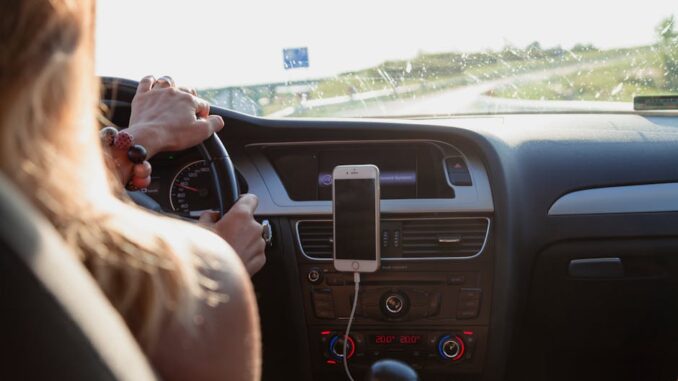
Summary
This article discusses a recent Japanese study highlighting the positive impact of continuous glucose monitoring (CGM) devices with low-glucose alerts on the safety of diabetic drivers. Researchers found a significant decrease in hypoglycemic incidents while driving among participants using CGM devices with alerts, alongside a notable increase in driver confidence. This technology offers a promising solution for mitigating the risks associated with hypoglycemia and improving road safety for individuals with diabetes.
Gain peace of mind with TrueNASs 24/7 support from healthcare data storage specialists.
** Main Story**
Driving with diabetes? It’s a challenge, no doubt. Primarily because of the risk of hypoglycemia – that’s low blood sugar, which, as you know, isn’t ideal when you’re behind the wheel. It messes with your cognitive function, slows your reaction time, and makes decision-making a real struggle, all crucial for safe driving, right? But there’s some encouraging news coming out of Japan.
A recent study from Nagoya University Graduate School of Medicine suggests that continuous glucose monitoring (CGM) devices, especially those with low-glucose alerts, can seriously boost safety for diabetic drivers. Published in Diabetes Research and Clinical Practice, the study hints at a transformation in the driving experience for people managing diabetes. So, what did they actually do? Let’s dive in.
The Nitty-Gritty of the Study
The researchers ran a randomized crossover study. Sounds fancy, but it’s pretty straightforward. They had 30 participants with diabetes, all insulin-treated, and all drove at least three times a week. The cool part? They compared two four-week periods. One where the CGM had active low-glucose alerts, and the other where the data was ‘blinded,’ meaning participants didn’t know their glucose levels. An eight-week washout period sat in between to reset everyone. I mean, you wouldn’t want any lingering effects from skewing the results, would you?
The results? Pretty compelling.
-
They saw a significant drop in hypoglycemia incidents while driving during the alert period. 19% versus 33% in the no-alert period. That’s a big difference.
-
What’s more, those with Type 1 diabetes spent way less time with blood glucose below target levels when alerts were on.
-
And get this, 63% of participants felt more confident driving with the active low-glucose alerts. I can only imagine how reassuring it must be.
All in all, it strongly suggests that CGMs with alerts are effective in minimizing hypoglycemia-related incidents, giving drivers both safety and peace of mind. I think that’s brilliant.
Real-World Implications
Think about it: these devices give you timely warnings about low blood sugar. So, drivers can pull over and grab something to eat or drink – glucose-rich, of course. It’s a proactive approach that could prevent some serious issues on the road.
And the increased confidence? That’s huge. Managing diabetes is tough enough without the constant worry of hypoglycemia while driving. A friend of mine, who’s lived with Type 1 for years, told me it’s like having another full-time job, just thinking about keeping your glucose levels in check. CGM with low-glucose alerts takes some of that stress away, letting drivers focus on the road, feeling more secure. Can you imagine the relief?
Looking Ahead
It’s clear that CGM tech with low-glucose alerts has the potential to become standard for drivers with diabetes. You know, wider adoption could seriously cut down on diabetes-related driving accidents. Makes sense, right?
And further down the line?
-
I think it’d be great to see more research on the long-term effects on driving safety, looking at behavior and accident rates.
-
Plus, how about integrating CGM data with vehicle systems? Automated emergency braking, for example, could offer even more protection.
So, ultimately, this study shines a light on how much CGM devices with low-glucose alerts can improve safety and confidence for diabetic drivers. It’s a promising step toward reducing the risks of hypoglycemia on the road, leading to safer conditions for everyone. I really do think that wider adoption and integration of CGM technology into diabetes management strategies could make a real difference to millions. And that’s a future I’m excited about.


The increased driver confidence is compelling. Could this technology also be leveraged in other high-stakes professions requiring sustained concentration and rapid response times, like air traffic control or surgery?
That’s a fantastic point! Thinking beyond driving, the application of CGM tech in professions like air traffic control or surgery, where sustained concentration is crucial, is definitely worth exploring. The potential for real-time alerts to enhance performance and safety in those high-stakes environments is significant. It is interesting to consider the possibilities.
Editor: MedTechNews.Uk
Thank you to our Sponsor Esdebe
So, hypoglycemia incidents dropped by 14%? Does this mean I can finally blame my questionable parallel parking skills on something other than myself? I am off to get tested!
That’s hilarious! While the study focuses on hypoglycemia, blaming parallel parking on *something* is always a win! Let us know if the test gives you a good excuse. Seriously, though, getting tested is a great move for your overall health and well-being.
Editor: MedTechNews.Uk
Thank you to our Sponsor Esdebe